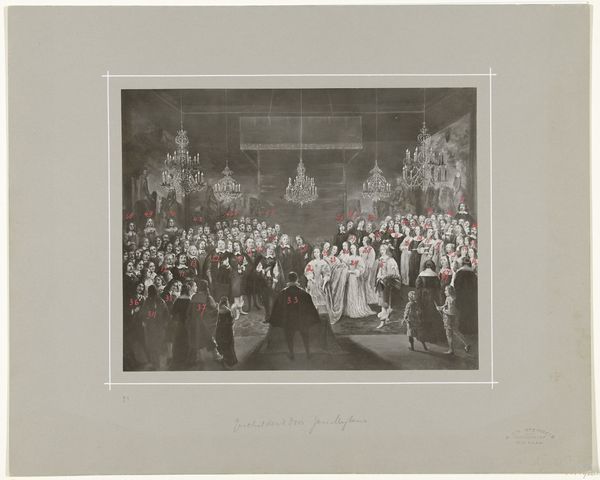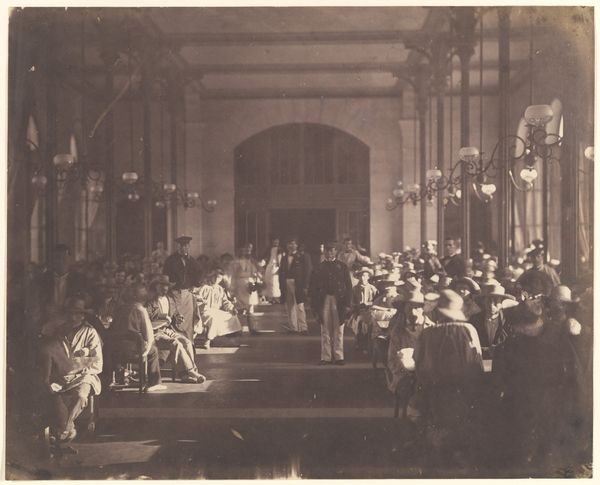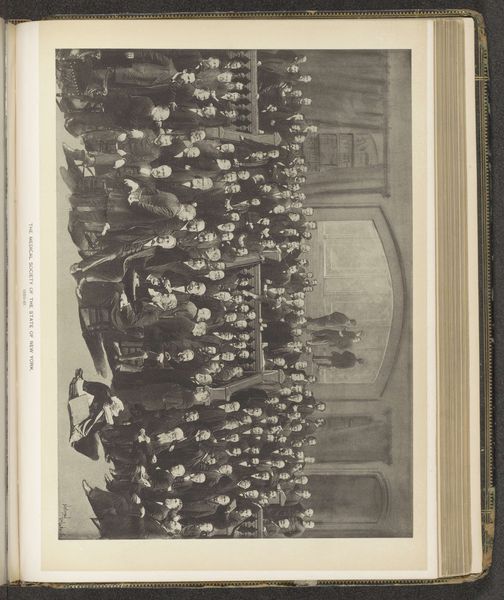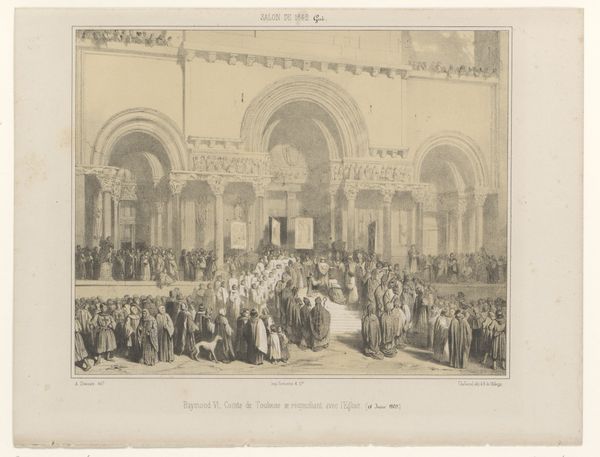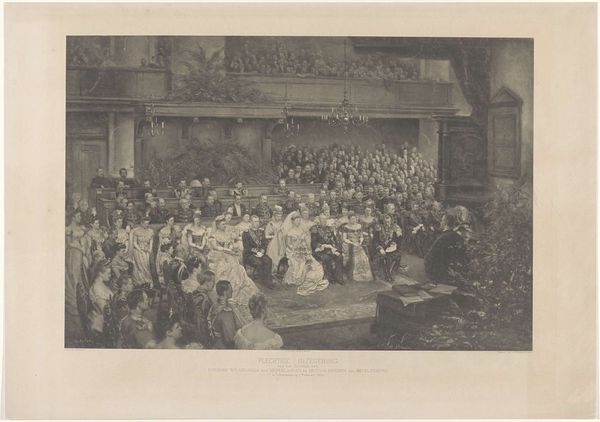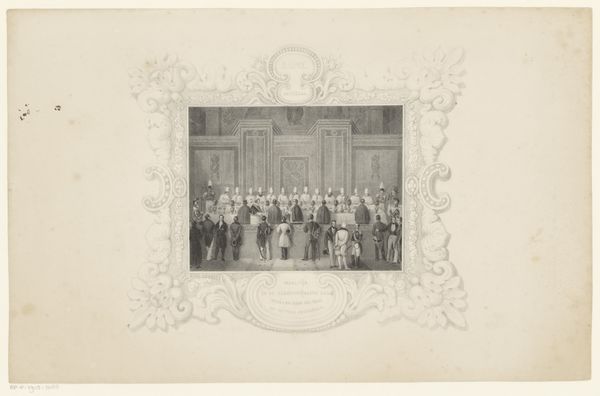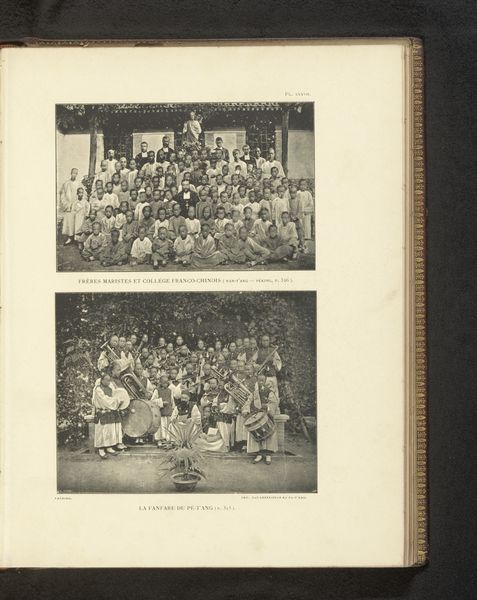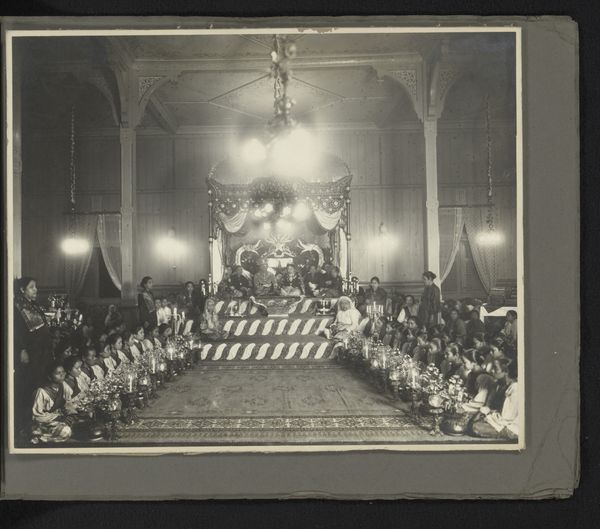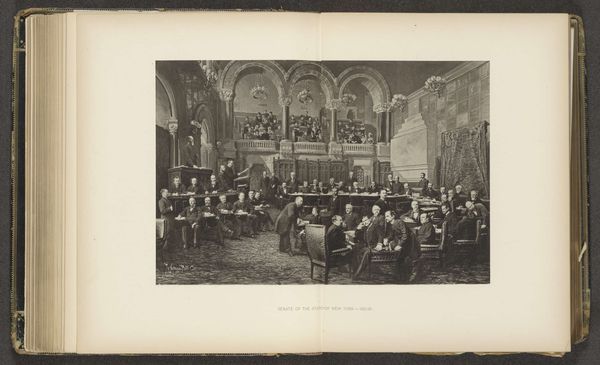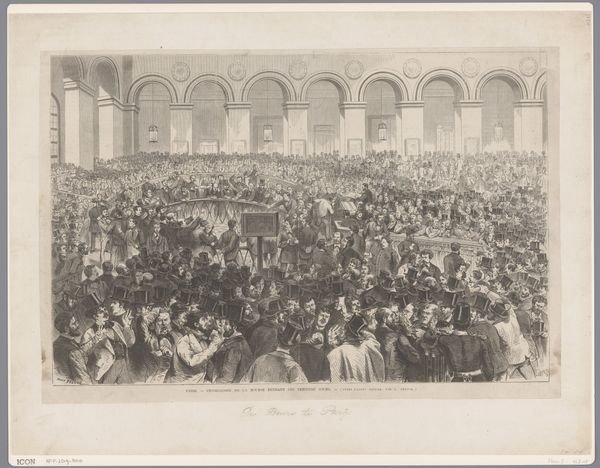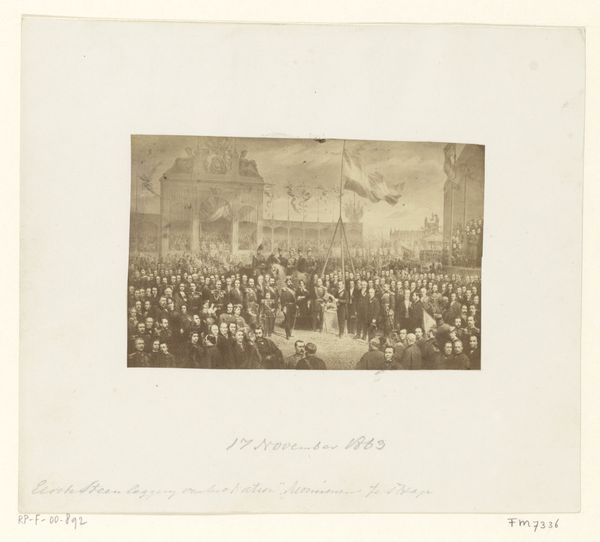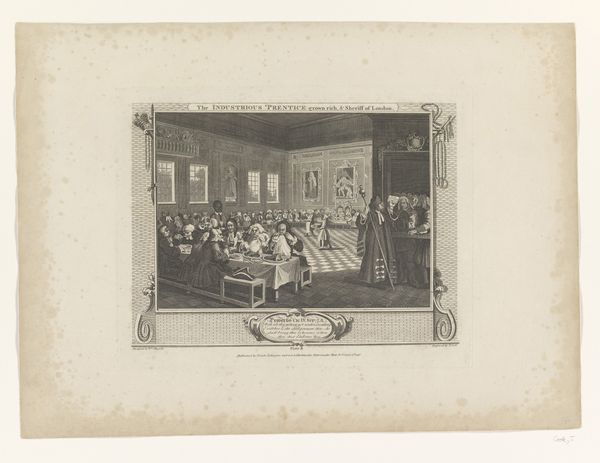
#
aged paper
#
homemade paper
#
paper non-digital material
#
paperlike
#
sketch book
#
personal journal design
#
personal sketchbook
#
journal
#
paper medium
#
historical font
Dimensions: height 172 mm, width 124 mm
Copyright: Rijks Museum: Open Domain
Curator: This is an image titled "Balzaal met onbekende groep mensen", dating to before 1891, credited to R. Slingsby. What strikes you initially? Editor: The sheer volume of faces. It’s a swarm contained within a very ornamented interior. There's an intensity to that many people depicted in one frame, pressed onto what seems like fragile paper. Curator: Exactly, it speaks volumes about the production and material conditions surrounding the circulation of images at the time. This photographic print, carefully pasted into what appears to be a personal journal, offers an early instance of mass spectacle and visual culture. Consider the labor behind documenting such a grand social event—the photographer’s presence, their equipment—and then think about how this contrasts against the seeming accessibility of the journal format. Who has the privilege to document such spectacle, and in what ways does this become mediated to personal reflection? Editor: I find it interesting you frame it as spectacle when it reads, to me, more as a record of capital. Look at the textures here—the wall coverings, the dresses, the men's suiting; each denoting class. The material wealth documented is quite striking when juxtaposed against the physical limitations of printmaking during this period. The scarcity and expense would highlight and reinforce that disparity, I’d imagine. Curator: Precisely. Consider the social currency that this record acquires. Those are meticulously adorned women in highly-tailored clothing positioned amidst an equally detailed architecture. How did they benefit or suffer, by being included, from having this record included? It isn’t simply an aesthetic gathering; this type of formal representation shapes their identities and, more broadly, reinforces existing class and gender hierarchies. Editor: That intersection of visual and material culture you bring up is crucial. I mean, looking at how the image sits on this almost homemade paper... it highlights not only the technical skill needed for reproduction, but also raises questions about ownership and access. Was the ability to possess such a photographic reproduction a marker of status in itself? What about who took the image and its circulation and access, and could afford to insert it in the album? Curator: That is the vital tension in the image: How can something seemingly accessible, contained within the intimacy of a journal, reflect these vast social divides? I guess that it really does come down to those same underlying dynamics: representation and labour, ultimately, dictating reality. Editor: Well, that tension is perhaps the lasting impression for me – a tension caught and framed onto that fragile paper over a century ago.
Comments
No comments
Be the first to comment and join the conversation on the ultimate creative platform.
